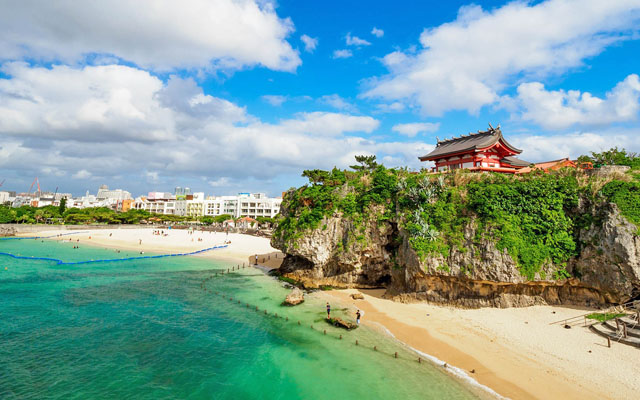The Association of Asia Pacific Airlines (AAPA) is reaching out and covering more parts of the region. Subhas Menon, its director general, explains what this means for the association’s priorities

AAPA gained three new members in quick succession – Lion Air Indonesia in November 2024, Qantas Airways in January 2025, and Air New Zealand this month. How will the association’s expansion impact AAPA’s industry advocacy efforts, goals and purpose?
We speak for the whole of the Asia-Pacific region, and our members represent all parts of the region. With all 18 members today, our voice is that much more credible and stronger.
The addition of Qantas Airways and Air New Zealand is significant because the South West Pacific region was a white spot for AAPA; we didn’t have any airlines from that region before. Furthermore, both of them are leading forces in South West Pacific.
Getting Lion Air Indonesia is also a milestone for us because it is the first budget airline to join AAPA.
Is there a qualifying criteria for members?
Because we deal with global matters, our airline members have to have a significant international operation in the Asia-Pacific region. Airlines that join us are based in the GMT plus five to plus 12 zone, in countries that follow the ICAO’s (International Civil Aviation Organization) definition of Asia-Pacific.
What led to this rapid expansion of the AAPA airline membership in recent months?
Expanding membership is a prevailing priority at AAPA, and not something that suddenly become important to us. However, in some years, it was not easy to get new members to join us because of various challenges that airlines had to face.
Airlines see the value of an AAPA membership. They see that the association is dealing with issues that are right up their alley.
What issues would these be?
Safety is an important priority. Airlines always put safety front and centre. Last June, AAPA organised the first of its kind Asia Pacific Turboprop Safety Conference in Kuala Lumpur, Malaysia. We brought more than 100 delegates together to share insights, best practices, and innovations in turboprop operations. Key topics discussed ranged from safety culture and technology advancements to regulatory frameworks, reinforcing best approaches to aviation safety.
This year, we will be organising a wider, broader Asia Pacific Turboprop Safety Conference, which is scheduled to take place in September in Manila, the Philippines. It will allow us to tackle a lot more issues related to safety, and attract more participants.
Sustainability is another prevailing priority. Achieving this requires fuel efficiency, but sustainable aviation fuel (SAF) is taking a long time to come online. There is not enough SAF. Airlines are not fuel producers, but we will do what is within our control.
Therefore, we are focused on fuel efficiency and are choosing to chase technology capability by talking with the OEMs (original equipment manufacturers) to persuade them to accelerate their plans to introduce new propulsion systems and carbon-abating technology.
We are also always monitoring regulatory developments (that impact airline operations) and talking to governments about setting up seamless travel for air passengers.
Take this scenario as an example – due to supply chain constraints, there have been many flight disruptions in the past few months. Regulators tend to adopt knee-jerk reactions. They respond to flight disruptions with penalties on airlines and insist that airlines refund passengers’ tickets right away and take full responsibility for cancellations and disruptions. These responses increase the cost for airlines.
However, airlines are already doing their best to accommodate passengers and look for alternative arrangements.
It is also troubling that the regulatory environment is very fractious – every state does its own thing and there is no consistency or harmonisation of policy approaches and regulations. It is very confusing, and people don’t want to travel under those circumstances.
These are our objectives. The more voices we have in our membership, the stronger we are to advocate for action.
On the topic of safety – there have been a couple of air incidents recently. Have these dented air travel confidence?
I don’t think so. Forward bookings have not been affected by these incidents. Air transport is still the safest mode of travel and people know that.
Well, we don’t want any of these incidents to happen but when they do, we have to take it as a learning exercise. We have to find out everything we can about them to prevent them from happening again.
A lot of the advocacy work that associations do are in the back-end, with policymakers, regulators and industry professionals. However, consumer perspective can impact the airline business. Does AAPA do any consumer-facing communications? Perhaps to inform the travelling public of the supply chain bottleneck that is causing flight delays or network issues, so that some of the pressure can be taken off airlines?
AAPA is not a public relations company, that’s not our brief. Our members don’t want us to provide that service. Instead, our members want us to speak with governments and regulators across the 39 ICAO states in Asia-Pacific.
Nevertheless, we try to do as much communication as we can through press releases. We do talk to consumer media as well. I go on Bloomberg once in a while to share perspectives and information.
There are so many different issues, challenges and opportunities (in air travel), and it is not possible to communicate all that in a consumer facing way. It can get too technical for consumers to understand. I think airlines’ public relations teams are better equipped to do that.
ICAO issued a statement last month, saying that SAF production has been “disappointingly slow”. What is AAPA’s opinion on this?
AAPA agrees fully with ICAO. The problem in the industry is that we are putting all the eggs in one basket. We are saying that we cannot get to net zero unless we we have enough SAF, but SAF production is not enough.
Airlines do not control fuel production. It falls on the governments to do whatever is necessary to get SAF producers.
The ICAO (net-zero carbon emissions) roadmap is a multi-prong roadmap, and the core competence of this industry is technology. We need more focus on aircraft technology capability, and we are communicating this with OEMS, as mentioned earlier.
Now, there is a huge focus on technology because due to supply chain issues, airlines are using more and more old technology, which results in less fuel efficient operations and more emissions.
Can airlines exert pressure on governments to make wiser decisions about renewable energy production?
Exerting pressure on governments is a tall order. What we do is communicate with governments and understand what their issues are too.
Last year, Boeing and Standard Chartered supported a project to explore the availability of feedstock for SAF production in South-east Asia. The study, conducted by the Roundtable on Sustainable Biomaterials, found that the region’s feedstock is able to supply around 12 per cent of global SAF demand by 2050.
This collaborative project shows that ASEAN governments are interested in this, and want to do something that is coordinated and harmonised across the region. There is high-level support elsewhere in Asia too. Japan has instituted a public-private partnership to produce SAF. Thailand already has a good track record with bio-diesel and is coming up with policies to support local fuel producers.
One thing good about Asia-Pacific is that a lot of the fuel producers are government-linked, so they can (influence production).
AAPA is always talking to the governments, to help them realise how important sustainable aviation is.
Where is the bulk of SAF production at this point?
Global SAF production is still mostly in the West – 90 per cent is in the US and less than five per cent in Europe.
Would US president Donald Trump’s lack of support for green fuels have an impact on renewable energy production in Asia-Pacific?
Of course, Trump’s policies will have a big say. The Biden Administration was very pro-sustainable aviation fuel. It passed the 2022 Inflation Reduction Act (which sets out provisions for updating guidance around energy usage that will improve carbon emissions and help to mitigate the impacts of climate change). So far, the Trump Administration has not indicated intentions to reverse all of that. That means, biofuels is still part of his agenda.
However, we never know what will come, so we have to hedge our bets and see.
(Editor’s note: Trump passed an executive order in January to suspend all Inflation Reduction Act funding disbursement, which would impact clean energy construction and manufacturing projects in the US, although the White House had followed up with a clarification that it would not be a sweeping pause.)
So, we do need Asia-Pacific to speed up SAF production, as it will mean supply stability and also be cheaper for airlines in our region to pipe in fuel, yes?
Yes. Well, Asia-Pacific is like an elephant. It takes a long time to get up and run, but once it does, you don’t want to be standing in its way.

















